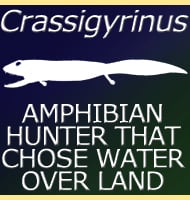In Depth
Aquilolamna is a genus of fish confirmed to have lived in the ocean around Mexico during the late Cretaceous. The name Aquilolamna means ‘eagle shark’, a reference to the long ‘wings’ formed by the pectoral fins and the general shark-like body. However, at the time of the naming of the genus, Aquilolamna was only tentatively placed with the sharks as key anatomical features to prove or disprove a link to sharks such as teeth were yet to be discovered and described.
In general Aquilolamna had a long round body, wide mouth and large pectoral fins. Pectoral fins are basically like hydrofoils and large fins are commonly seen in fast swimming fish. It is uncertain though if Aquilolamna was a fast swimmer, it could just as likely be that the enlarged pectoral fins allowed for energy efficient swimming, a real bonus if Aquilolamna was a planktonic filter feeder as is popularly thought. Many sharks, rays and other types of fish are known to be dedicated plankton feeders, and the evolution of Aquilolamna does seem to be convergent with these in terms of ecological niche. The late Cretaceous seas however were dangerous places with other larger sharks and mosasaurs possibly being predators of Aquilolamna.Further reading
- Manta-like planktivorous sharks in Late Cretaceous oceans. - Science. 371 (6535): 1253–1256. - Romain Vullo, Eberhard Frey, Christina Ifrim, Margarito A. Gonz�lez Gonz�lez, Eva S. Stinnesbeck & Wolfgang Stinnesbeck - 2021.









